The fire raging in front of the 65-meter-high “mountain of waste” in Ghazipur, India, is not yet fully extinguished, leaving local residents gasping for breath from toxic smoke.
Fire Erupts
Parts of the fire that broke out on March 28 at a massive landfill in Ghazipur, a suburb of Delhi, often referred to as the “mountain of shame,” continued to smolder for 24 hours afterward, enveloping local residents in a suffocating sky and prompting continuous complaints about inhaling toxic smoke.
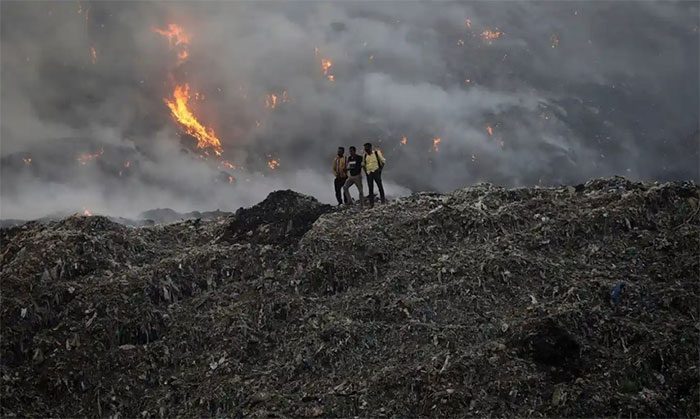
Residents standing at the burning Ghazipur landfill in Delhi, India. (Photo: The Guardian).
The Delhi Fire Service (DFS) reported that over 90 firefighters have been battling the flames since March 28, struggling due to the height of the fire and the lack of access routes.
“There are no roads or ground access to reach the fire point. Additionally, our firefighters could suffocate or fall. We have been contending with all the methane gas and other toxic fumes. The only way to extinguish the fire is to remove the garbage using fire hoses and spraying water at the fire points,” emphasized the Delhi Fire Service.
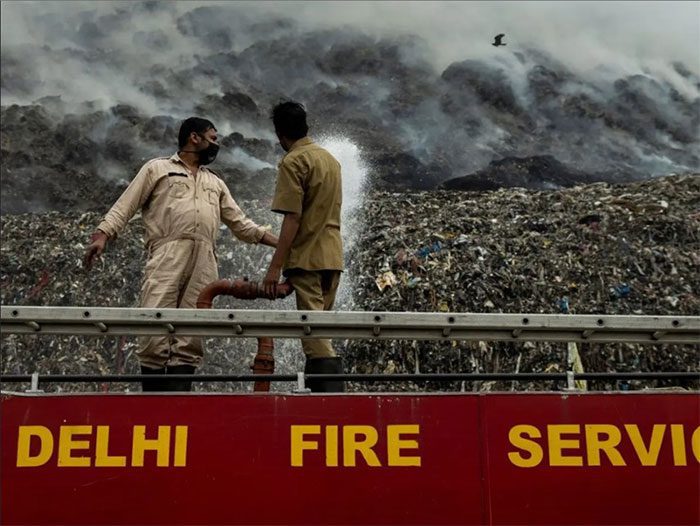
Firefighters from the Delhi Fire Service (DFS) extinguishing the fire. (Photo: Quartz).
The exact cause of the fire has yet to be determined. However, based on the actual conditions, March 28 was the hottest day in Delhi so far this year, and experts suggest that the heat may have increased the methane emissions from decomposing waste. Once the methane levels surpass a certain threshold, the fire can ignite.
“My son was the first to start itching and coughing,” said Shyam Biswas, a flower vendor at the local wholesale market. “Then my father began showing similar symptoms, and when we stepped out onto the balcony, it was a sky full of black smoke.”
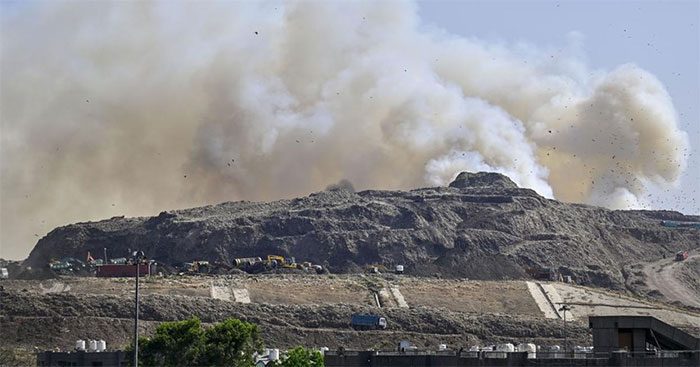
Thick smoke rising straight into the sky from the Ghazipur landfill, Delhi, India. (Photo: Scroll.in).
Looking at the landfill from the highway passing through Ghazipur, it resembles a strange mountain with vultures circling overhead.
“The mountain of shame” is piled high with waste from 20 million residents of Delhi, established in 1994, covering an area of 32 hectares and reaching a height of 65 meters. This landfill has exceeded its capacity for over a decade, yet 2,500 tons of waste continue to be dumped there every day.
Giant “Mountains of Waste”
Like many other cities in India, Delhi lacks any waste processing system other than dumping it in landfills. A 2020 study by the Center for Science and Environment revealed that over 3,000 mountainous landfills across India are holding up to 800 million tons of waste.
The tallest landfill in the country, located in Mumbai, is estimated to be as high as an 18-story building.
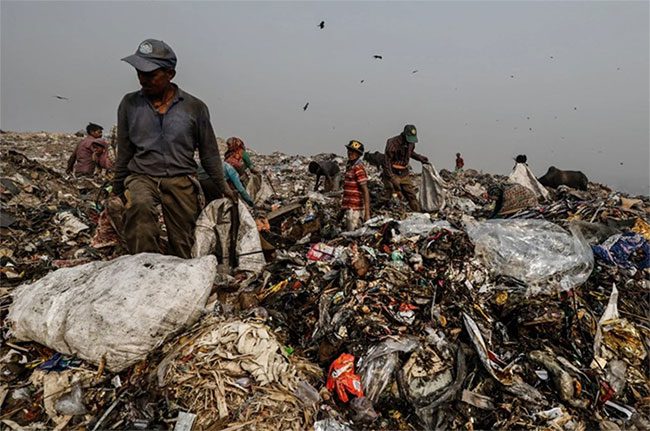
Daily life at the mountains of waste in India. (Photo: FII).
The Ghazipur landfill is a constant health hazard for the residents of Delhi and India as a whole. Last year, fires erupted here four times. Back in 2017, a large portion of the landfill collapsed due to poor compaction, spilling onto the road and resulting in the deaths of two people.
For those living near the Ghazipur landfill, the air is perpetually toxic. Decomposing waste emits toxic gases, further polluting an already heavy atmosphere.
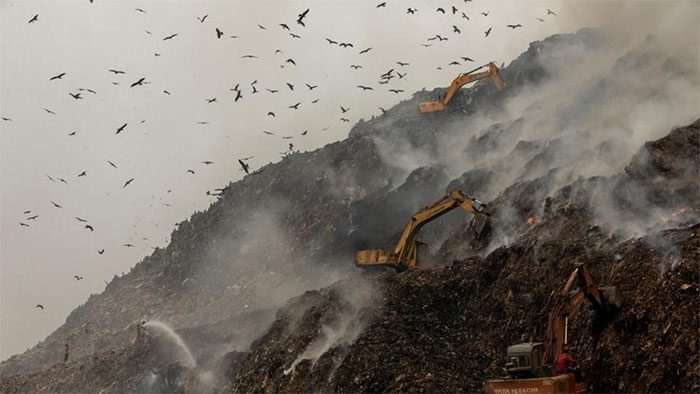
The Ghazipur landfill burning in Delhi, India. (Photo: Hindu Times).
A report from the World Air Quality last week indicated that Delhi was the most polluted capital in the world in 2021, marking the fourth consecutive year.
“The issue is that the waste at the Ghazipur landfill is a type of mixed, unsegregated waste, so the fire will release all kinds of toxins contained within, including sulfur dioxide, carbon soot, nitrogen, and particulate matter into the air, making the air even worse than normal,” according to Richa Singh from the Center for Science and Environment.
By noon on March 29, 24 hours after the fire broke out, the flames were still smoldering.
The local authorities in Delhi are working to flatten the landfill, an urgent task as waste continues to be dumped there daily.



















































